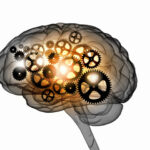
Years ago, therapy was only thought of to be a space where a person and a therapist would meet and talk things through. While talk therapy still exists and can be extremely effective, our perspectives on what exactly therapy is and can be has greatly broadened over the years.
These days there are a number of new therapeutic treatment options being developed to address a wide variety of mental health concerns. With the growing popularity of alternative treatment options, more creative approaches to therapy are increasing in popularity. This is likely because many of these alternative therapies use subliminal elements to address the client’s inner needs and feelings without confronting them directly and, consequently, meeting a barrier of instinctive resistance. In other words, therapies like art therapy and play therapy allow the therapist to communicate with their clients in such a way that they can get to the root of their problems by reframing them. In this way, these concerns might become easier or perhaps more comfortable to address for the client.
Music Therapy: What is It?
Another form of therapy, however, has recently been gaining popularity amongst mental health professionals. Although lesser known than more conventional methods like traditional talk therapy, music therapy is being shown to be an effective form of therapeutic treatment for many individuals. But first, what is music therapy? Not many people know what exactly goes on during a typical session, which might make them hesitant to try it out in the first place. According to board-certified music therapist Dr. Dean Olsher, what music therapy actually is is a “ a rich and varied set of traditions co-existing under one big tent.”
But what does this mean? When congresswoman Gabrielle Giffords suffered a near-fatal gunshot wound to the head, it rendered her nearly incapable of speaking. She was only able to regain this ability when neurological music therapists used singing to help her learn to speak again. The application of music into therapy is many and varied, taking on different forms to suit the individual client’s needs. Music therapy has also been shown to be able to reach ndividuals with dementia. In these instances, the patients might be able to make music of their own, or simply listen and respond.
In psychotherapy, which once developed as an alternative to Sigmund Freud’s the “talking cure,” practitioners tend to align themselves with any number of orientations. These include psychoanalysis, humanistic psychology, and cognitive behavioral therapy (CBT). Like psychotherapy, music therapy can take on many different forms. Olsher describes: “Therapy happens in any number of ways, including improvisation, writing new lyrics to existing songs, you name it.” The versatility of music therapy is, in part, what makes it so effective. It can be customized to fit the client’s specific needs through music. Music, in and of itself, is an emotional and thoughtful medium. We might feel affected by certain songs or sounds, while others might resonate with us in ways that we might not have really been able to express otherwise. This ability to transcend linguistic barriers is, in part, what makes music such an effective medium for therapeutic treatment. Music can help give a voice to the voiceless in a similar way that art or images can, in many cases, speak more than words alone can.
How Music Therapy Works
Music therapy is specially designed to meet the needs of the individual. In some sessions of music therapy, the client might simply listen to music prescribed by the therapy. Conversely, in others, the client might be encouraged to sing, write a song, or play an instrument. In this way, music therapy can be somewhat similar to occupational therapy – a form of therapy in which the client seeks recovery from a physical or mental health illness through the performance of activities that will be useful in their daily lives.
However, it might be incorrect to characterize either of these forms of treatment as either active, or passive, says Olsher, since it’s not quite that simple. He explains that “even ‘passive’ music therapy is actually active, because the music therapist is inviting the client to listen actively and to respond in some way or to reflect on how and which aspects of a particular piece of music/song is/are relevant or meaningful to that individual’s experience. An example of this is Guided Imagery and Music (GIM for short) in which the client images to specifically programmed music, with the music therapist serving as a guide of sorts. Afterward they process the material that emerges as a part of the listening, sometimes using active music-making to do so.”
It is also worth noting that music therapy differs from other activity-based therapies, including the aforementioned occupational therapy, because it is more specialized. Music therapists use their knowledge about how music affects the brain and employs musical elements in various different ways to meet the client’s needs. For example, an occupational therapist may incorporate music into their sessions, but their focus and expertise is not specifically in the area of musical intervention. Music therapists are more likely to invite clients to engage in and reflect on the interpersonal process of music. Moreover, they’re interested in supporting the emotional and relational growth of a person or group. These are not the focus of occupational therapy.
Music Therapy is an Option Worth Trying
Music therapy is one of many options available to individuals who need help coping with mental and emotional distress. It has been shown in many instances to help overcome linguistic barriers and help heal individuals after traumatic incidents. While lesser known than more conventional methods of therapy such as psychotherapy and talk therapy, it can nevertheless be highly effective in individuals who respond more strongly to music than words alone. As such, music therapy may be worth considering if you feel as though you might benefit from this form of interactive treatment.




